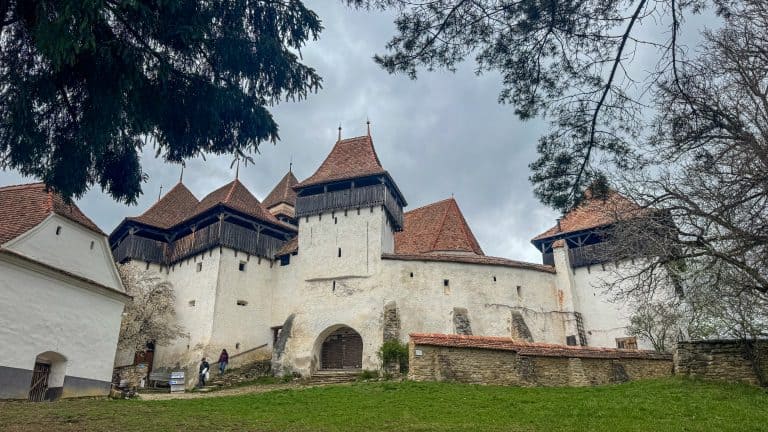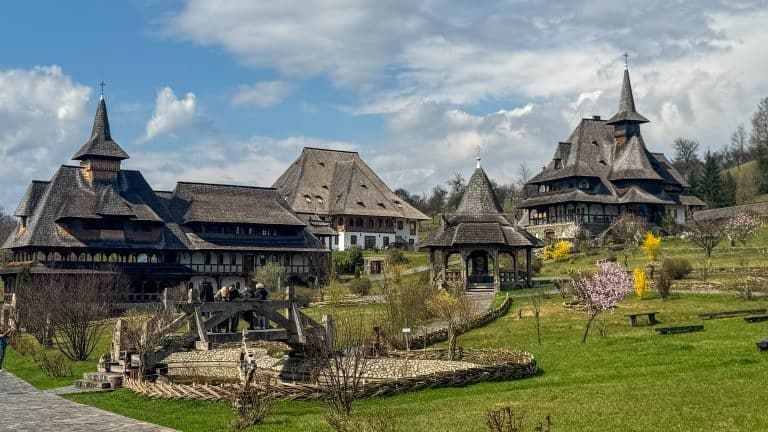9 Best Things to do in Kraków, Poland.
Freedom Years Travel contains affiliate links. If you make a purchase using one of the links below, we may receive compensation at no extra cost to you. We only recommend products and services we use and trust. Read our disclaimer for more information.
Have you ever visited a city that completely surprised you?
When I first heard of Kraków in the early 1990s, it was mostly a base for visiting Auschwitz. I pictured a drab, Soviet-style city, still emerging from behind the Iron Curtain.
I couldn’t have been more wrong. When I finally visited in 2024, I found a vibrant, multi-layered city packed with history, culture, and more things to do than I could fit into a 3 day visit! From medieval squares to gorgeous cafés to sites that tell the story of a complex history, Kraków exceeded every expectation.
Now Poland’s top tourist destination, Kraków is surging in popularity, with searches up 310% in 2024. Visit now before crowds take over—here are nine unforgettable experiences you won’t want to miss.
Things to Do in Kraków
Is Kraków Worth Visiting?
Absolutely! Kraków (pronounced Krah-koof) is one of Europe’s most fascinating cities.
Once Poland’s royal capital, it’s home to Wawel Castle, medieval streets, and Rynek Główny, Europe’s largest medieval square. Unlike many Polish cities, Kraków’s Old Town survived World War II intact.
Kraków’s Jewish heritage can be explored in the Kazimierz district, the former Jewish quarter. Today, it’s a vibrant district filled with restaurants, bars, cafés, and cultural landmarks, where history and modern life sit side by side.
Beyond the city, Kraków is the perfect base for exploring two must-visit UNESCO sites—the haunting Auschwitz-Birkenau Memorial and the amazing Wieliczka Salt Mine.
With its rich history, vibrant nightlife, and thriving café culture, Kraków offers countless things to see and do—all at a fraction of Western Europe’s cost. Whether you’re exploring historic landmarks, museums or simply hanging out in the Main Square, there’s no shortage of unforgettable experiences in Kraków.
1. Explore the Old Town
Kraków’s Stare Miasto (Old Town) blends centuries of history with vibrant city life. At its heart lies Rynek Główny, Europe’s largest medieval market square, always buzzing with activity.
In the centre stands the iconic Cloth Hall, where merchants have traded for centuries. Inside, stalls sell everything from handcrafted souvenirs to amber jewelry.
Nearby, St. Mary’s Basilica, founded in the 13th century, is a must-visit. Step inside to admire its ornate interior—well worth the admission. Don’t miss the hourly trumpet call played from the tower, a tradition dating back to medieval times.
Beneath the square, Rynek Underground reveals Kraków’s hidden past. This interactive museum, built around an excavated tunnel system, showcases medieval merchant stalls, artifacts, and holograms that provide a glimpse into 14th-century life.
For a deeper dive into the history of Kraków, join a guided walking tour. We took this tour, starting at the Barbican gate, passing through Rynek Główny, and ending at Wawel Castle. Our guide was excellent, covering everything from medieval architecture to World War II history and Pope John Paul II’s significant influence.
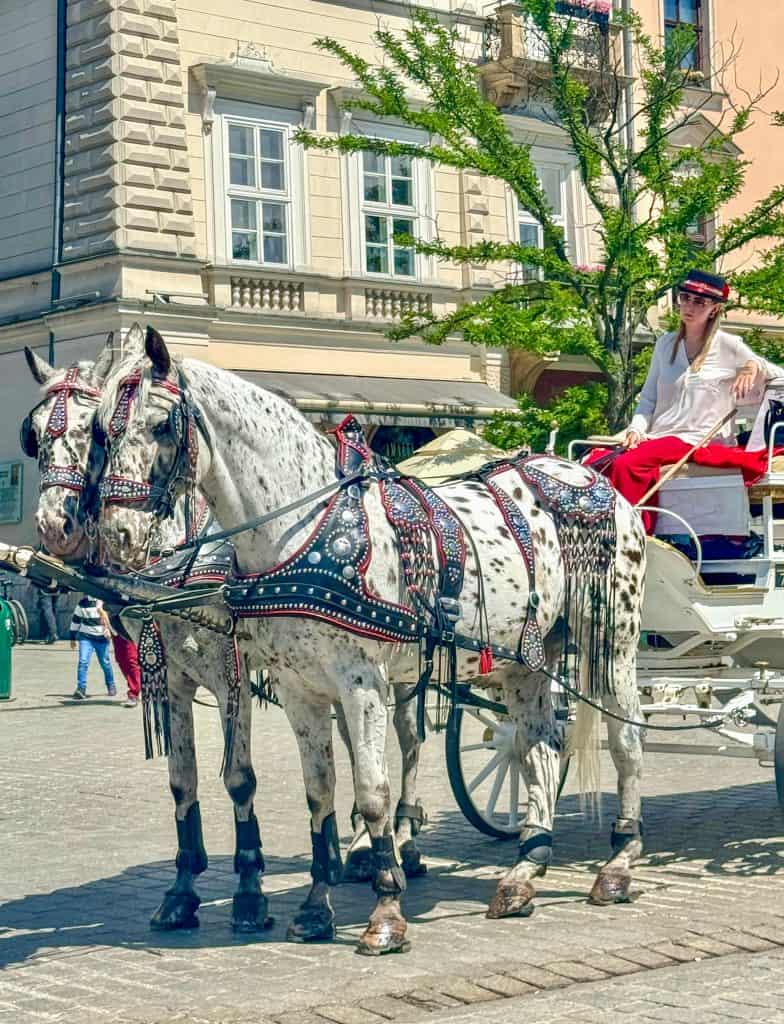
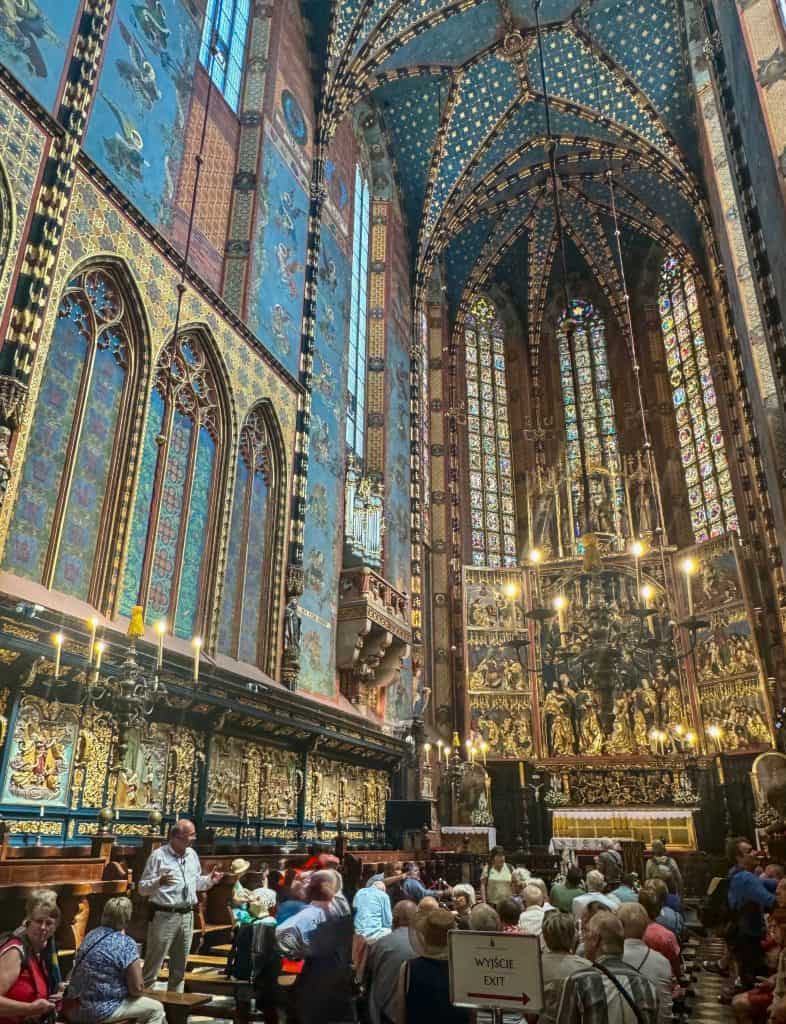
2. Tour Wawel Castle and Museum
Perched on a hill above the Vistula River, Wawel Castle (VAH-vel) is one of the best things to do in Kraków. Once the seat of Poland’s kings, it now houses a museum showcasing centuries of history, art, and culture. Inside its grand halls, you’ll find royal chambers, priceless tapestries, and the Crown Treasury and Armoury.
Australian visitors might be surprised to learn about Tadeusz Kościuszko (Kos-CHOO-shko), a national hero in Poland’s fight for independence and a key figure in the American Revolutionary War. He is buried in Wawel Cathedral, located within the castle grounds. (Australia’s highest mountain is named in his honor – and we butcher the pronunciation of his name!)
Be sure to visit Wawel Cathedral, the site of royal coronations and burials. It’s possible to climb the bell tower for panoramic views of Kraków.
Beyond the museum, don’t miss Dragon’s Den, a limestone cave beneath the castle, steeped in legend. Follow the path to a fire-breathing dragon statue, inspired by a Kraków’s legend.
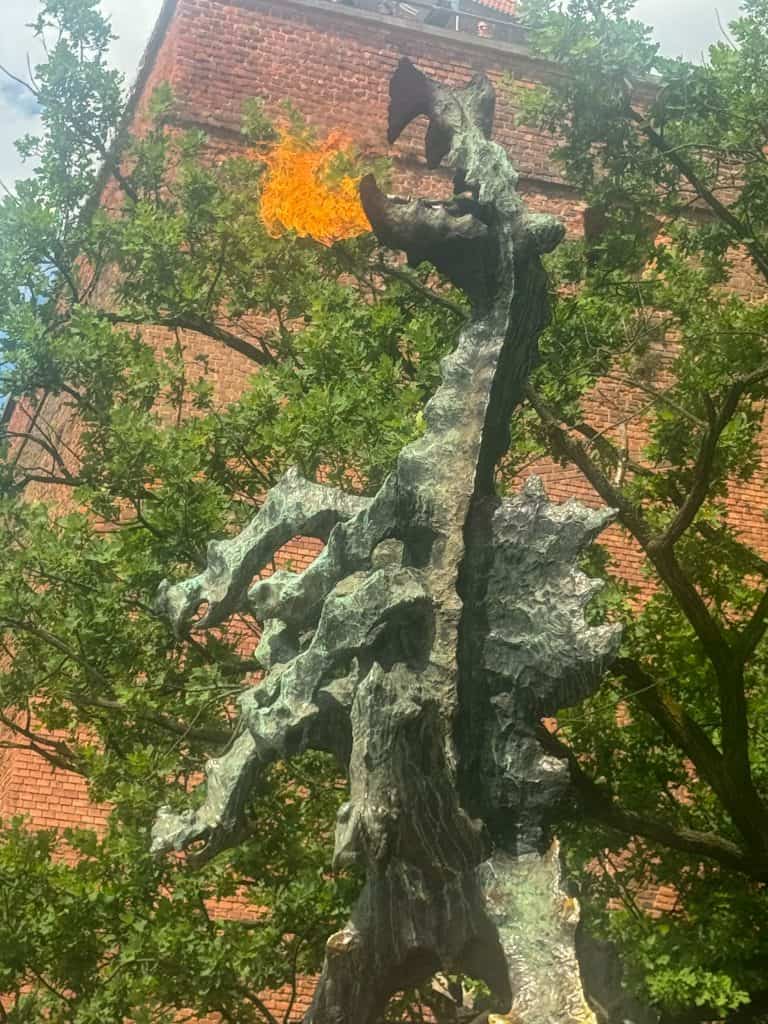
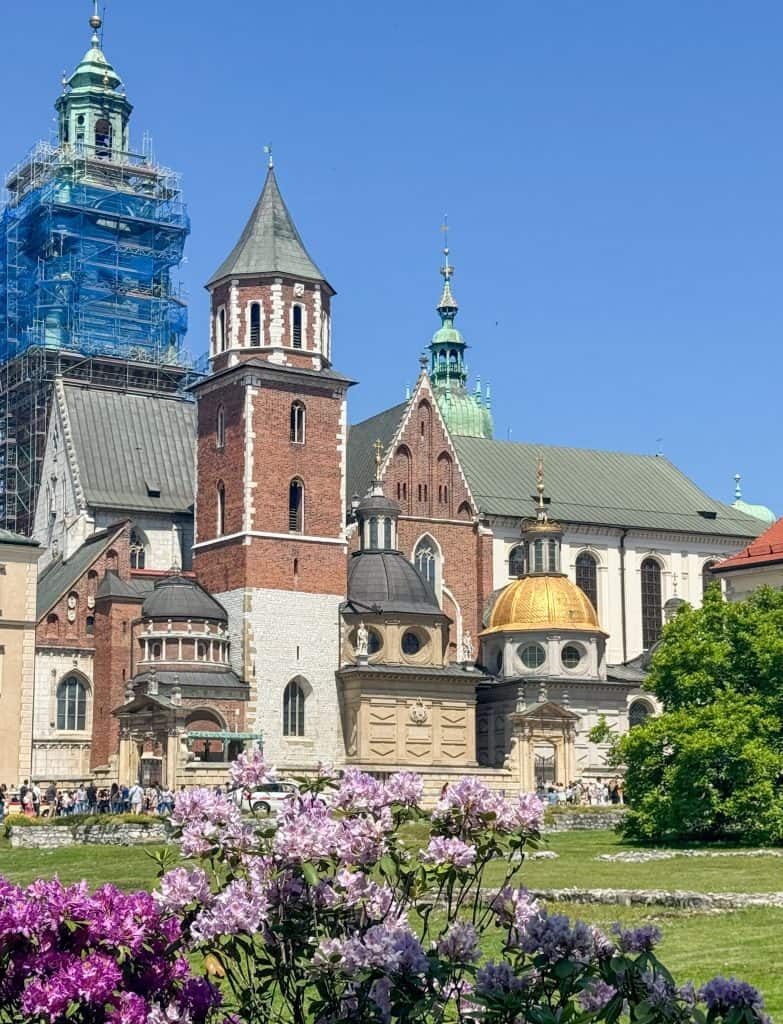
3. Tour the Kazimierz District (Jewish Quarter)
Kraków’s Kazimierz district (KAH-zhee-myesh) is a fascinating blend of Jewish heritage and modern culture. Before World War II, over 60,000 Jewish residents lived here, making up nearly a quarter of the city’s population. It was one of the largest and most vibrant Jewish communities in Europe. Tragically, most were deported and murdered during the Holocaust.
Today, many former synagogues serve as museums, including the Old Synagogue and Remuh Synagogue. One of the most moving sites is Plac Bohaterów Getta (Ghetto Heroes Square), home to the haunting Chair Memorial. Each empty metal chair symbolizes the belongings left behind when the ghetto was liquidated. A powerful reminder of the district’s past.
Despite its tragic history, Kazimierz has transformed into a lively cultural hub. Trendy cafés, bars, and restaurants line its streets, serving everything from traditional Jewish cuisine to modern fusion dishes. Don’t leave without trying zapiekanka, a personal favorite—an open-faced baguette loaded with mushrooms, cheese, and sausage. For an immersive experience, catch a live Klezmer music performance over dinner, a tribute to the area’s Jewish roots.
✨ To get the most out of your visit to Kazimierz, I recommend joining the Krakow Jewish Quarter and Ghetto Free Tour. Truly a 5 star tour!
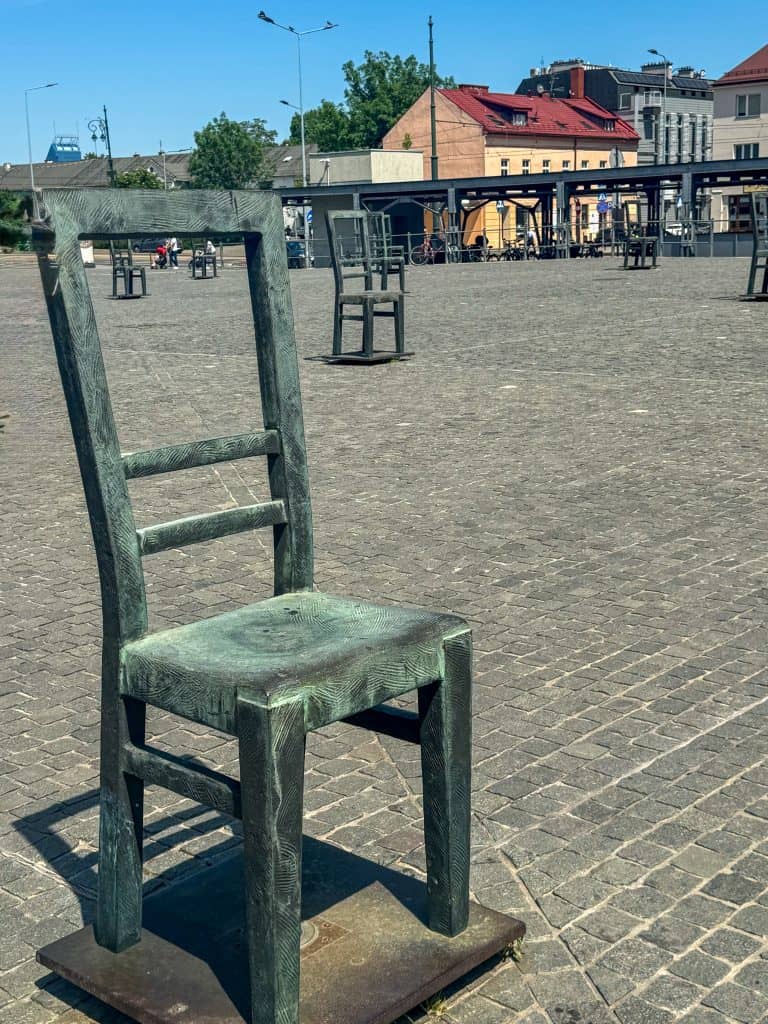
4. Visit Oskar Schindler’s Enamel Factory
A visit to Oskar Schindler’s Enamel Factory is a powerful and thought-provoking experience. While it tells the story of Schindler and his efforts to save Jewish workers, the museum goes much further, vividly portraying Kraków under Nazi occupation.
The exhibits immerse you in the daily realities of life in the ghetto, from the cramped, overcrowded living conditions to the brutality of the round-ups. Certain details will stay with you— such as how many people were forced to share a single room or the story of the extraordinary bravery of a young girl who saved her Jewish friend from the ghetto.
One thing I’d do differently? Join a guided tour. The museum doesn’t offer an audio guide, which means a lot of reading—challenging when navigating narrow corridors packed with tour groups.
Since the museum is inside Schindler’s original factory, space is limited. I highly recommend pre-booking.
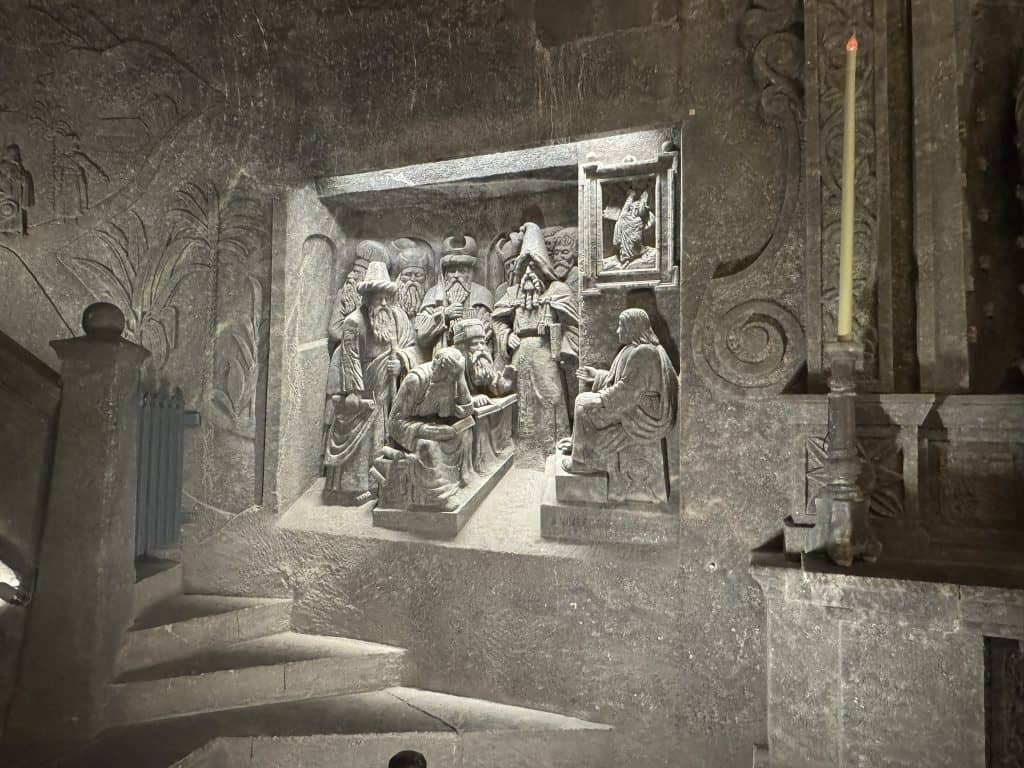
5. Descend into the Wieliczka Salt Mine
Just outside Kraków, the Wieliczka Salt Mine (VYEH-leech-kah) is a UNESCO World Heritage site and one of the oldest salt mines in the world, operating since the 13th century. It’s fascinating to think that salt – something we take for granted in modern times – helped shape Kraków’s fortunes.
The journey begins with a long descent down a wooden staircase, leading 135 meters underground. Below, a labyrinth of tunnels, chambers, and sculptures—carved entirely from salt—stretches for miles. The highlight is the breathtaking Chapel of St. Kinga, complete with intricately detailed carvings and chandeliers made entirely of salt crystals.
Wear comfortable shoes—it’s a lot of walking. But it’s well worth it to explore this subterranean marvel, unlike anything else you’ll see in Poland.
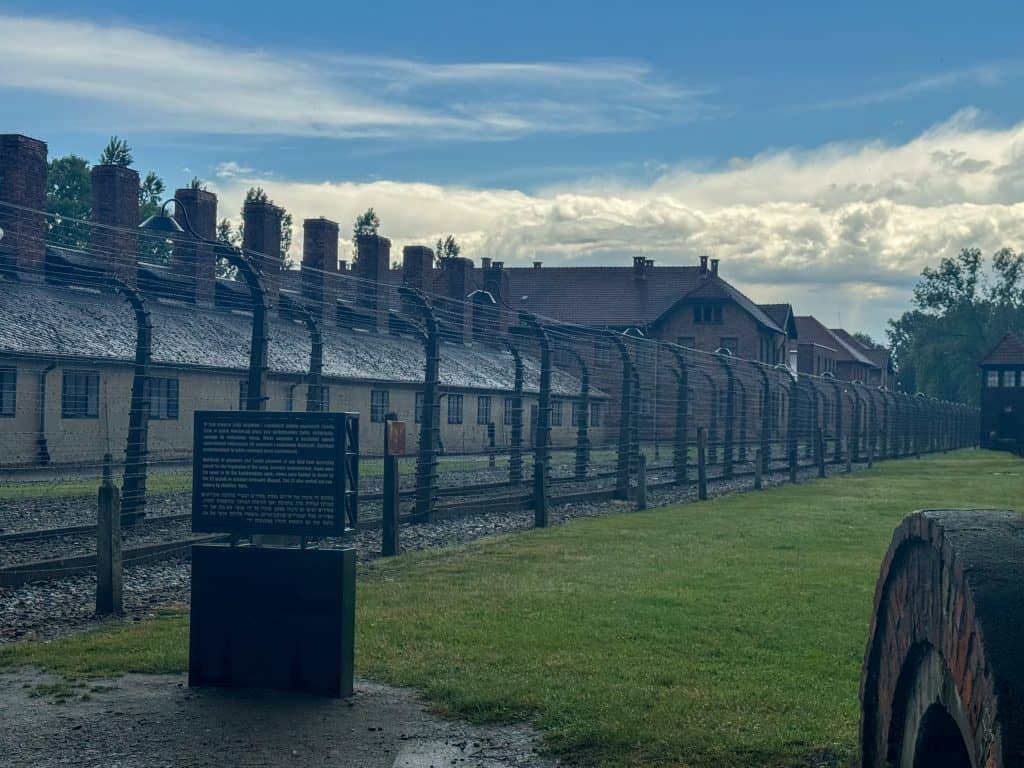
6. Take a Day Trip to Auschwitz-Birkenau
A visit to Auschwitz-Birkenau (OW-shvitz BEER-ke-now) is one of the most important things to do near Kraków. Located about an hour from the city, this former Nazi concentration and extermination camp is now a memorial and museum dedicated to the 1.1 million lives lost here during World War II.
Walking through Auschwitz, with its brick barracks and haunting displays of personal belongings, is a deeply sobering experience. While I was familiar with the Auschwitz name, I hadn’t realized the significance of Birkenau. This is where the scale of atrocities became industrialized, making the horror even more overwhelming.
Visiting isn’t easy, but it’s essential for understanding history and honoring those who suffered. We took a guided tour, which provided invaluable context—including difficult but necessary details that linger long after you leave. Be prepared for an emotional experience, and allow yourself time to reflect afterward.
If you plan to visit, book tickets in advance, as the site is understandably in high demand.

7. Stroll along Planty Park
Encircling Kraków’s Old Town, Planty Park offers a peaceful escape from the city’s busy streets. Built in the 19th century, it replaced Kraków’s medieval walls, which had fallen into disrepair. Instead of fortifications, the city created this 4-kilometer green belt, transforming the area into a public park.
As you wander through, you’ll pass landmarks like the Bishop’s Palace, home to Kraków’s bishops since the 14th century. It’s closely tied to Pope John Paul II, who served as Archbishop of Kraków before becoming pope. Stop by the “papal window,” where he once spoke to crowds—a site still visited by pilgrims today.
The park is dotted with fountains, sculptures, and remnants of Kraków’s medieval defenses, including the Barbican Gate, one of the few surviving sections of the original fortifications. Notable sculptures include the Frederic Chopin Monument (Rzeźba Fontanna Chopina) and a tribute to Nicolaus Copernicus.

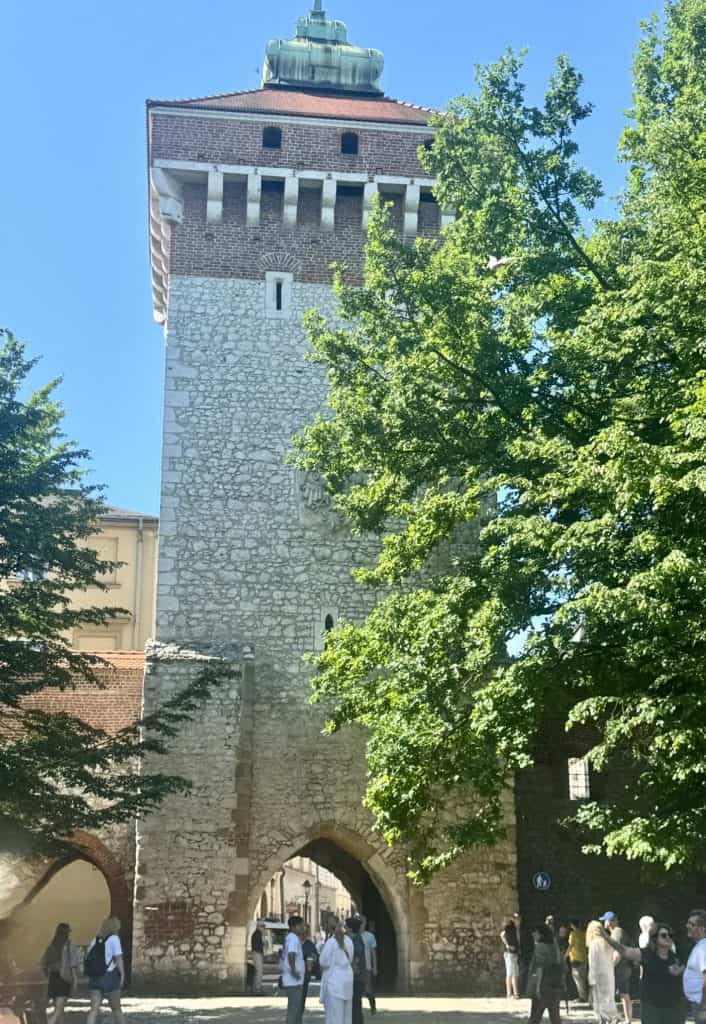
8. Experience the Vistula River
The Vistula River, Poland’s longest waterway, flows through Kraków and has shaped the city’s history for centuries. Once vital for trade and transport, it remains a central part of local life.
On a sunny afternoon, the riverbanks fill with families, cyclists, and couples out for a stroll. We spent a lazy afternoon here, watching children chase giant soap bubbles, locals walking their dogs, and friends chatting on park benches. It’s the perfect place to take a break and watch the world go by.
For a different perspective, try one of the floating restaurants docked along the river. They serve great food with views of Wawel Castle and the passing boats—a memorable way to enjoy a meal in Kraków.
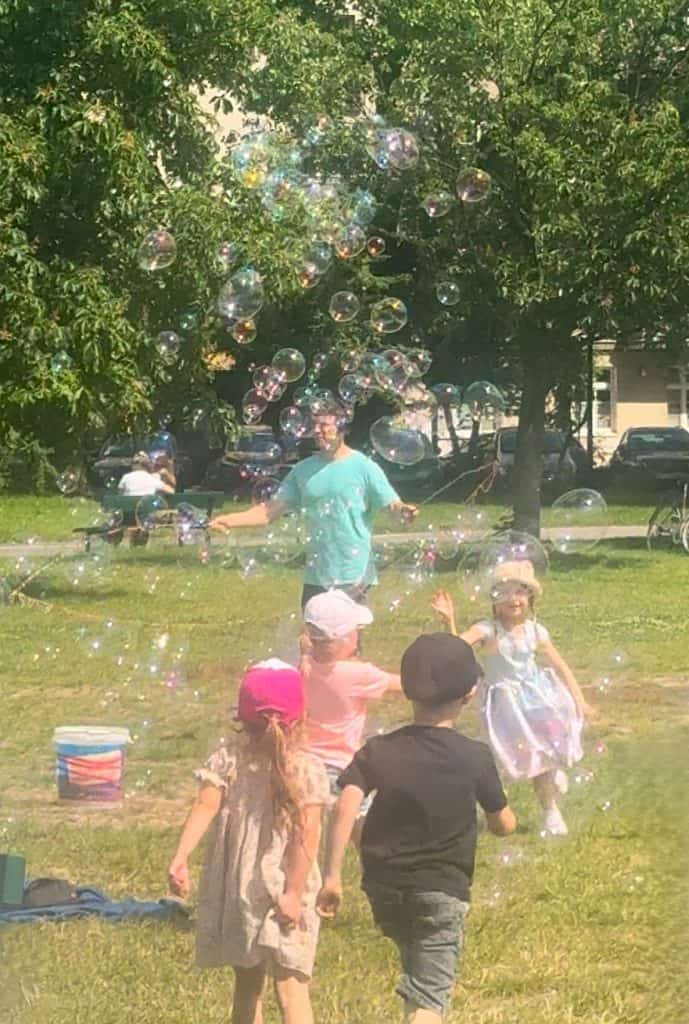

9. Indulge in Kraków’s Food Scene
Kraków’s food scene is as diverse as its history. From hearty Polish classics to modern European dishes and creative fusion cuisine, there’s something for every palate. Whether you prefer fine dining, a cozy café, or a quick bite from a street vendor in Rynek Główny, you won’t go hungry. Kazimierz, in particular, is known for its fantastic restaurants and lively bars.
One of the best ways to experience the local flavors is on a food tour. Options range from street food tastings to sit-down experiences in Kazimierz or the Old Town—a great way to learn about the cuisine while sampling some of the best bites in the city.
During my visit, I ate—twice—at JAMA Michalika, one of Kraków’s oldest restaurants. Tucked away from the busy streets, it has an old-world charm with art nouveau décor and antique furnishings. The traditional Polish dishes used familiar ingredients in ways I hadn’t encountered before—unexpected combinations that gave each meal a distinct Polish twist.
✨ At JAMA Michalika, you can also enjoy a folk show with traditional singing and dancing, two evenings per week. A fun and delicious evening out!

Visiting Kraków FAQs
How do I Get to Kraków?
By Air
Kraków John Paul II International Airport (IATA: KRK) is the city’s main airport, located about 15 kilometres from the city centre. It’s easily accessible by taxi or Uber, offering a quick and convenient journey. During my visit, I found the airport hassle-free, even though it was very busy when we departed on a Ryanair flight.
Plan ahead for peak times, but overall, it’s an efficient gateway to Kraków.
By Rail
Poland’s modern and efficient train system makes rail travel an excellent option. My journey from Gdansk (via Warsaw) was smooth, comfortable, and hassle-free. However, I’d highly recommend pre-booking, if you plan to travel first class. Despite traveling during the shoulder season, the train was packed!
Upon arrival at Kraków Główny Station, finding a taxi was simple thanks to the clear signage.
We booked our train tickets directly with PKP Intercity App.
By Bus
Long-distance buses to and from Kraków operate from MDA Kraków, the city’s main bus station, conveniently located next to Kraków Główny train station. Buses connect Kraków to major Polish cities like Warsaw, Gdansk, and Wroclaw, as well as international destinations across Europe. This option is often budget-friendly, with coaches offering Wi-Fi and comfortable seating.
How many days in Kraków is enough?
Kraków’s compact size makes it an ideal weekend getaway—you can explore the Old Town, visit key landmarks like Wawel Castle, and get a feel for the city’s rhythm in just two or three days. However, there’s plenty of things to do if you prefer a more leisurely pace or want to take day trips to places like Auschwitz or the Wieliczka Salt Mine. I spent three full days in Kraków last year and returned for another three days this year to tick off some experiences we missed the first time. You could easily dedicate a week or more to fully exploring what Kraków has to offer.
Where to Eat in Kraków?
Kraków’s food scene is diverse and delicious, with something for every taste.
In Kazimierz, you’ll find trendy restaurants serving everything from traditional Polish dishes to international cuisine. Milk bars in the city offer affordable, homemade classics, while the Old Town features charming cafes and fine dining.
The Main Square is a hub for street food, with options like zapiekanki, pierogi, and more. We faced serious decision fatigue trying to choose—it’s a foodie’s dream!
Which Currency is used in Poland?
Poland uses the Polish Złoty (PLN).
What language do they speak in Kraków?
The official language in Kraków is Polish, but as a popular tourist destination, English is widely spoken, especially in hotels, restaurants, and attractions. Most locals in the tourism industry are comfortable with English, so communication is rarely an issue.
That said, learning a couple of basic Polish phrases can go a long way:
- Hello – Dzień dobry (jen DOH-bri)
- Thank you – Dziękuję (jen-KOO-yeh)
These small efforts are often appreciated by locals and can add to your travel experience!
Is Kraków Expensive?
Kraków is surprisingly affordable compared to many European cities, making it a great destination for value-conscious travelers.
Meals at casual restaurants or milk bars are inexpensive, while even fine dining offers excellent value. We did, however, find that meals at cafes on Rynek Główny were almost double the price we had paid in Gdansk’s Main Square. Venturing off the main square of Kraków we found excellent value options.
Public transportation is cheap and efficient, and many attractions, like walking tours or exploring Planty Park, are free or low-cost.
Accommodation ranges from budget hostels to luxury hotels. Overall, Kraków offers a fabulous travel experience without breaking the bank.
What souvenirs can I buy in Kraków?
Kraków offers a range of unique souvenirs. Here are a few to consider:
- Bolesławiec pottery: Known for its intricate hand-painted designs, this pottery is a true work of art. I was tempted to buy a piece—if only I didn’t have weeks of travel ahead!
- Oscypek cheese: A smoked sheep’s cheese from the Tatra Mountains.
- Folk costumes: Miniature versions of the traditional Krakówiak costume are available, especially in the Main Square. They’d make a beautiful gift for any little princesses.
- Flavoured vodka: These small 30mL bottles of vodka come in a variety of flavours, from apricot to cranberry, walnut, and coffee—great for gift-giving.
- Gingerbread: The street stalls around Rynek Główny offer beautifully decorated gingerbread in a variety of different shapes.
- White goose plushies: These soft, white geese are popular souvenirs in Kraków. While they hold cultural significance, it’s possible that the viral Polish TikTok star and his pet goose, Pipa, contributed to their rise in popularity.
- Pigeon plushies: My personal favourite! While pigeons are considered pests in Australia, here in Kraków, they’re celebrated enough to be turned into cuddly souvenirs. There’s surely an interesting story behind this—one I hope to discover next time.

Where to Stay in Kraków?
Kraków offers a variety of accommodation to suit different tastes and budgets. For first-time visitors, Old Town (Stare Miasto) is ideal. Staying here places you within walking distance of top attractions like Rynek Główny (Main Market Square) and Wawel Castle.
If you’re drawn to vibrant nightlife and a creative atmosphere, Kazimierz, the former Jewish Quarter, is a great option. The area is known for its trendy bars, cafes, and artistic vibe, offering plenty to explore after dark.
For a taste of luxury and old-world charm, I can highly recommend The Bachleda Luxury Hotel Kraków MGallery. Located just on the edge of the Old Town, this hotel combines classic elegance with modern comfort. Its beautifully preserved period fittings and luxurious atmosphere made my stay feel like something out of a bygone era. It’s just a short stroll from major landmarks and the Vistula River, and I often find myself wondering if I dreamt the experience!
Second time around, we opted for an apartment closer to Rynek Główny (Main Square). Calliope Apartments was spacious, comfortable and beautifully decorated. A delicious breakfast at a local cafe was included.
For more tips and hotel picks, see my full guide on where to stay in Kraków—it’s tailored for first-timers and anyone navigating accessibility needs.
Final Thoughts on Kraków
Kraków leaves a lasting impression. It’s got history, charm, and plenty of surprises—whether you’re wandering through medieval streets, descending into an underground salt mine, or enjoying the atmosphere in Rynek Główny.
With its growing popularity, now is the perfect time to visit before the crowds swell even further. So, pack your bags and get ready to discover one of Europe’s most remarkable cities.
Planning a Trip to Auschwitz?
It’s one of the most significant—and sobering—day trips from Kraków. I’ve written a separate guide to Visiting Auschwitz from Kraków to help you decide whether to go independently or with a tour, and what to expect on the day.


